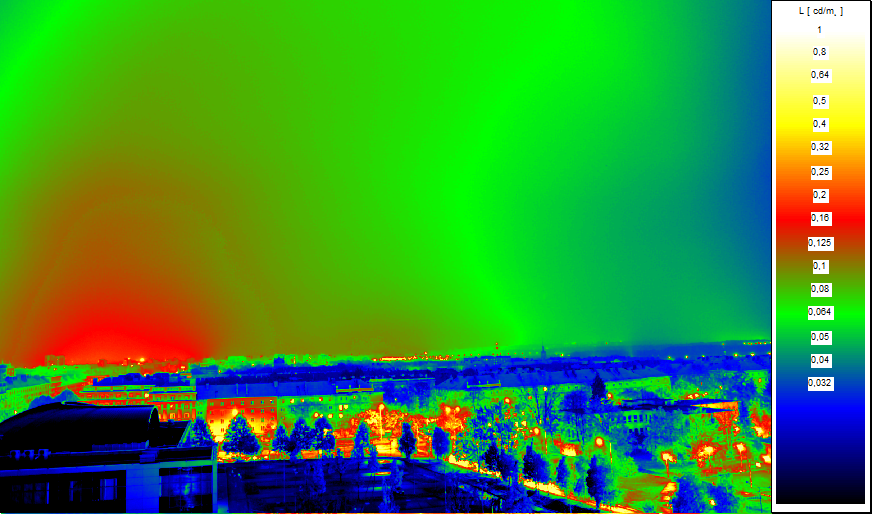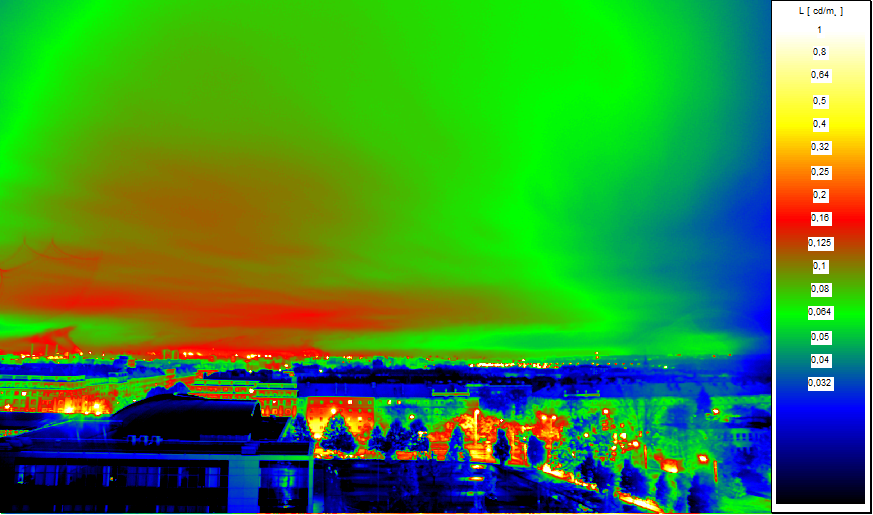Thanks to cooperation with the city, Ostravské komunikace, the Czech Lighting Society, Regional Group Ostrava, and the Police of the Czech Republic, public lighting was switched off for a short time in these districts. Brightness maps were taken from the faculty building on 17. listopadu Street before and after the public lighting was switched off.
"We evaluated the influence of public lighting on the brightness of the night sky," says Tomáš Novák from the Department of Electrical Power Engineering, the FEECS VŠB-TUO. At present, there is increasing pressure to reduce obtrusive light. The FEECS experts believe that it is essential to quantify contributions from individual light sources, such as public lighting, billboard advertising, outdoor work areas, outdoor sports grounds, architectural lighting, shop windows, windows, cars, etc., and work with them so that it is clear how they contribute to the radiation into the upper half-space. Lighting systems must also be divided into those that ensure safety and those that are important only in terms of aesthetics (or marketing). "Safety concerns, for example, visibility on roads and orientation in built-up areas of municipalities. Some aesthetic lighting systems, in turn, model and complete the character of cities and municipalities and their architecture. We have to work with all this from the point of view of the degree of disturbance,” Novák explains.


It is assumed that quantification of contributions from individual large outdoor lighting systems will lead to the conclusion that public lighting causes obtrusive lighting (increased sky brightness). However, as one of the most sophisticated sources of outdoor lighting, it is regulated and controlled, which will show that active advertisements, outdoor workspaces (e.g. railway marshalling yards, or industrial and storage areas), shopping centres, etc. will be at least comparable in their significance as obtrusive light sources in cities such as Ostrava.
The results of measuring the brightness of the sky will serve as a basis for discussions on the possibilities of measuring, modelling and evaluating obtrusive light at the international workshop CIE WORKSHOP ON THE CALCULATION AND MEASUREMENT OF OBTRUSIVE LIGHTING co-organized by our university